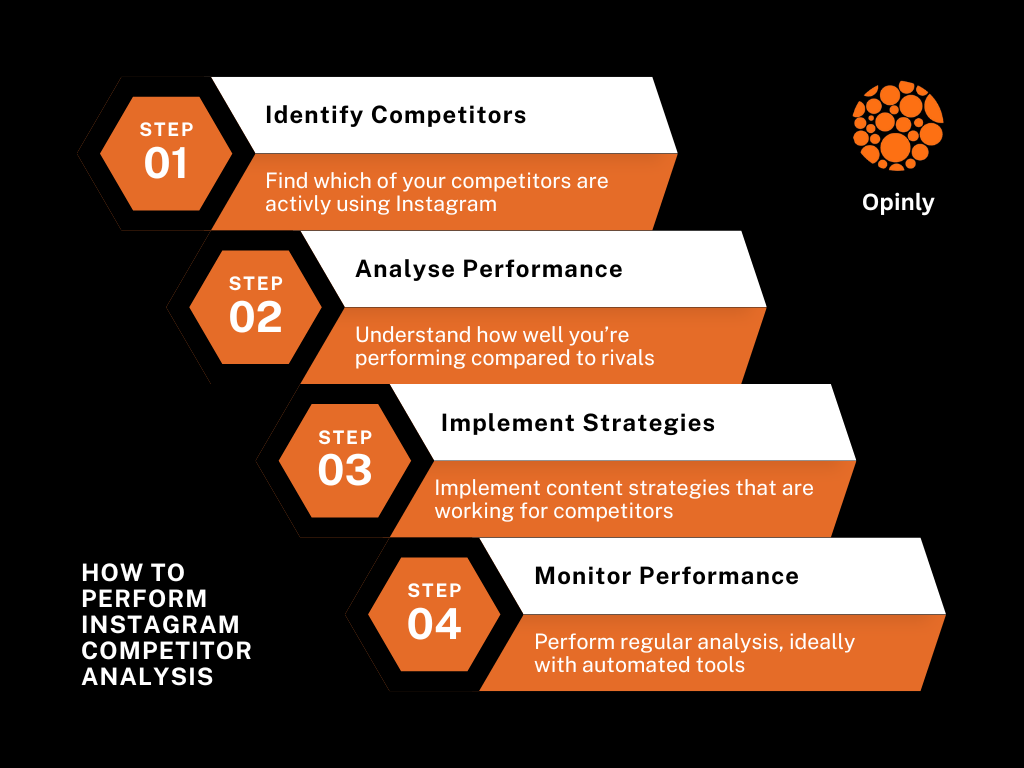The Importance of SWOT Analysis Marketing Plan
Discover the importance of SWOT analysis in marketing plans. Learn how it helps identify strengths, weaknesses, opportunities, and threats.

Have you ever wondered how businesses make informed decisions about their marketing strategies? One of the key tools they use is SWOT analysis. SWOT stands for Strengths, Weaknesses, Opportunities, and Threats.
This simple yet powerful framework helps businesses understand their internal strengths and weaknesses, along with external opportunities and threats. By evaluating these four elements, companies can create strategies that capitalize on their advantages, mitigate their shortcomings, and seize chances to push ahead in the market.
But why is strategic planning so important in marketing? In today’s fast-paced business world, companies need to plan strategically to stay competitive and grow. Strategic planning helps businesses set clear goals, align their resources effectively, and adapt to changes in the market.
A well-created marketing plan, built on a solid SWOT analysis, ensures that every marketing effort is aligned with the overall business objectives, maximizing both efficiency and impact. This alignment is important not just for survival but for thriving in a competitive landscape.
By understanding and applying SWOT analysis, businesses can ensure they’re not just reacting to market forces, but actively shaping their destiny in the marketplace.
Understanding SWOT Analysis
SWOT analysis is a tool that helps break down and examine the various elements that impact a business. Here's what each part of SWOT stands for:
- Strengths: These are the things your business does really well. It could be a strong brand, loyal customers, a great location, exclusive technology, or skilled staff. Strengths are your advantages that help you stand out and attract more business.
- Weaknesses: These are areas where your business might struggle or aspects that limit you. Maybe your marketing budget is small, some of your equipment is outdated, or you're short-staffed. Recognizing weaknesses helps you understand where you need to improve to compete better.
- Opportunities: These are external factors that you could use to your advantage to grow and expand. Maybe a new market segment is emerging, or your competitors are failing to meet customer demands, and you can step in to fill that gap.
- Threats: These are external challenges that could cause trouble for your business. It could be anything from an economic downturn, new regulations, or more aggressive competition that might reduce your profits or market share.
Understanding these four elements allows you to make smarter decisions about where to focus your efforts and resources.
The Role of SWOT in Marketing
In marketing, SWOT analysis plays a critical role in shaping effective strategies. Here's how it fits into the marketing process:
- Guides Campaign Development: By knowing your strengths, you can tailor your marketing campaigns to highlight these positive aspects to your audience. Understanding your weaknesses tells you what areas to improve or avoid showcasing heavily.
- Enhances Market Positioning: SWOT helps in identifying the most favorable opportunities in the market. For instance, if there's a growing demand for eco-friendly products and that aligns with your strengths, you can position your brand to appeal to this market segment.
- Risk Management: By anticipating potential threats, you can create marketing plans that are not only proactive but also reactive. This might mean diversifying your product line or adjusting your pricing strategy to counteract new competitors.
Core Components of SWOT Analysis

a. Analyzing Strengths
When we talk about analyzing strengths in a SWOT analysis, we’re focusing on what your business does best.
This includes all the internal capabilities and resources that give your company an edge over competitors. For example, you might have a highly skilled team, a strong brand reputation, unique technology, or superior customer service. These strengths are crucial because they can be leveraged to maximize success.
Case examples of strengths in successful companies:
- Apple Inc.: Known for its innovative products and strong brand loyalty, Apple consistently uses these strengths to dominate the tech market.
- Amazon: With its vast distribution network and efficient logistics, Amazon delivers products faster than many competitors, making it a go-to for online shoppers.
By identifying and understanding these strengths, companies like Apple and Amazon continue to enhance their market position and attract more customers.
b. Identifying Weaknesses
Identifying weaknesses involves looking at the internal factors that limit or challenge your organization. This might include inadequate marketing resources, outdated technology, or insufficient research and development. Recognizing these weaknesses is the first step in mitigating their effects.
Strategies to mitigate weaknesses:
- Investing in new technologies to improve efficiency and productivity.
- Training and developing employees to enhance skills and performance.
- Outsourcing certain operations that are not cost-effective to manage internally.
These strategies help turn potential disadvantages into manageable aspects or even new strengths.
c. Exploring Opportunities
Opportunities are external factors that your business could take advantage of to grow and expand. These might include emerging markets, regulatory changes that favor your business, or shifts in consumer preferences that align with your offerings.
Methods to identify and capitalize on opportunities:
- Market research to stay informed about industry trends and customer needs.
- Networking with industry leaders to gain insights and new perspectives.
- Innovative marketing campaigns to attract new customer segments.
By being proactive and responsive to these opportunities, businesses can improve their market reach and profitability.
d. Assessing Threats
Threats are external challenges that could impact your operations or your market position. This could include new competitors, economic downturns, changes in consumer behavior, or more stringent regulations.
Strategies for risk management and threat mitigation:
- Diversifying product lines to reduce dependency on one product or market.
- Building a strong financial reserve to weather economic fluctuations.
- Staying compliant with all regulations to avoid legal issues.
By effectively managing these threats, businesses can safeguard their long-term stability and continue thriving even in adverse conditions.
Understanding these core components of SWOT analysis helps businesses not only survive but thrive by making informed decisions that use their strengths, compensate for their weaknesses, exploit opportunities, and minimize threats.
Integrating SWOT into Marketing Strategies

Market Segmentation and Targeting
Market segmentation and targeting are important for creating your marketing strategies to reach the right audience effectively. SWOT analysis plays a key role here by helping you use your strengths to appeal to the most promising market segments while avoiding areas where you have weaknesses.
Using SWOT for effective segmentation and targeting involves:
- Identifying strengths that meet the needs and preferences of specific customer groups. For instance, if your strength is in high-quality organic products, target health-conscious consumers.
- Acknowledging weaknesses to determine which markets are less feasible to enter. If your customer service is lacking, you might avoid highly competitive markets where customer service is key.
- Spotting opportunities in the market that can be seized, such as a growing demand for sustainable products among young consumers.
- Being aware of threats like emerging competitors targeting the same segments as you, and planning how to outperform or innovate differently.
Product Differentiation and Positioning
Differentiating and positioning your product uniquely in the market is essential for standing out. SWOT analysis helps by highlighting what unique strengths you can capitalize on and what weaknesses you may need to improve.
Applying SWOT to differentiate and position products includes:
- Leveraging strengths such as superior technology or design to create products that are clearly superior in those areas.
- Improving weaknesses that may hinder your product's performance in the market. For example, if product durability is a weakness, investing in better materials could turn it into a strength.
- Utilizing opportunities to position your product uniquely, like entering a market that lacks what you can offer.
- Countering threats by positioning your product as a better choice against competitors who might be leveraging aggressive marketing tactics.
Optimizing Pricing and Distribution Strategies

The right pricing and distribution strategies are important for maximizing your market reach and profitability. SWOT analysis provides insights into how you can set competitive pricing and choose the most effective distribution channels.
SWOT in setting competitive pricing and choosing distribution channels involves:
- Assessing strengths to see if higher pricing is feasible because of superior quality or exclusive features.
- Evaluating weaknesses to adjust pricing competitively if there are areas where the product or service might be seen as inferior.
- Exploring opportunities for distribution, like online platforms or international markets, where your products could reach more customers.
- Mitigating threats from competitors by ensuring your pricing strategy is flexible enough to respond to price wars or economic changes.
By integrating SWOT into these strategic areas, you ensure that your marketing efforts are not only well-planned but are also dynamic and responsive to both internal and external factors. This approach helps in making informed decisions that can lead to sustained business growth and a strong competitive position in the market.
Challenges and Limitations of SWOT Analysis

While SWOT analysis is a powerful tool for strategic planning, it's not without its challenges. There are several common pitfalls that can affect the effectiveness of a SWOT analysis:
- Subjectivity: One of the biggest challenges is the subjectivity involved in identifying strengths, weaknesses, opportunities, and threats. Personal biases and perceptions can influence how these factors are seen, which may not always reflect the true situation.
- Overemphasis on certain elements: Sometimes, there's a tendency to focus too much on either the positives (strengths and opportunities) or the negatives (weaknesses and threats). This imbalance can skew the analysis, leading to a strategy that might overlook critical aspects.
- Static analysis: SWOT analysis often captures a snapshot in time and doesn't account for how quickly changes can occur in the external environment. This can make some of the insights outdated if the market dynamics shift rapidly.
- Information overload: Gathering too much information can be as limiting as not having enough. Too many details can lead to analysis paralysis, where making decisions becomes increasingly difficult.
Overcoming Limitations
To ensure a SWOT analysis is both balanced and objective, consider the following strategies:
- Diverse perspectives: Involve people from different parts of the organization in the SWOT analysis process. This inclusion can help balance subjective biases and provide a more rounded view of the business.
- Regular updates: Treat SWOT analysis as a dynamic tool. Regularly updating your SWOT analysis ensures that it remains relevant and reflects the current market conditions.
- Prioritize factors: Not all elements identified in a SWOT analysis will have the same impact on the company. Prioritizing these factors by their potential impact on your business can help focus on what's truly important.
- Use data: Support your analysis with data wherever possible. Whether it’s market research, financial performance, or customer feedback, data helps to add objectivity to the analysis.
By being aware of these pitfalls and actively taking steps to avoid them, you can enhance the effectiveness of your SWOT analysis, leading to more informed and effective strategic decisions.
Conclusion
By examining your company's Strengths, Weaknesses, Opportunities, and Threats, you can create strategies that not only play to your advantages but also address potential challenges effectively. This holistic approach allows you to adapt and thrive in an ever-changing business landscape.
Implementing SWOT analysis into your marketing strategies isn't just a one-time task; it should be a regular part of your planning process.
Revisiting your SWOT analysis periodically ensures that your strategies remain relevant and responsive to the market. Whether you're launching new products, entering new markets, or simply refining your existing strategies, SWOT analysis provides valuable insights that can guide your decisions.
Frequently Asked Questions
1. What are the 4ps of marketing SWOT analysis?
The 4Ps—Product, Price, Place, and Promotion—are not directly part of a SWOT analysis but are essential elements of a marketing strategy that can be evaluated using SWOT. For example, you can analyze the strengths and weaknesses of your Product, assess the opportunities and threats related to Price, explore different Places (or distribution channels), and evaluate your Promotion strategies to identify how they can be optimized.
2. What are the weaknesses of a marketing plan?
Weaknesses in a marketing plan can vary but typically include issues like insufficient market research, unclear target audience, underutilized marketing channels, budget constraints, or weak brand messaging. Identifying these weaknesses allows marketers to make necessary adjustments to strengthen their marketing efforts.
3. What is a SWOT analysis for marketing communication plan?
A SWOT analysis for a marketing communication plan involves assessing the internal and external factors that can impact how effectively a company communicates with its audience. Strengths might include strong brand recognition or exclusive access to certain media platforms. Weaknesses could be lack of clarity in messaging or insufficient digital presence. Opportunities might arise from emerging technologies or new media channels, while threats could include increased competition or changes in media consumption habits.
4. What is Marketing SWOT analysis?
Marketing SWOT analysis is a strategic tool used to identify and understand the Strengths, Weaknesses, Opportunities, and Threats related to a company’s marketing strategy. It helps marketers optimize their strategies by focusing on building on strengths, addressing weaknesses, capitalizing on opportunities, and mitigating threats.
5. What is SWOT analysis for marketing manager?
For a marketing manager, SWOT analysis is a crucial tool that helps in making informed decisions about marketing strategies. It involves evaluating the internal strengths and weaknesses of the marketing department, such as team skills or resource availability, and external opportunities and threats like market trends or competitive actions. This analysis helps marketing managers prioritize initiatives, allocate resources efficiently, and adapt strategies to meet the changing market conditions.




